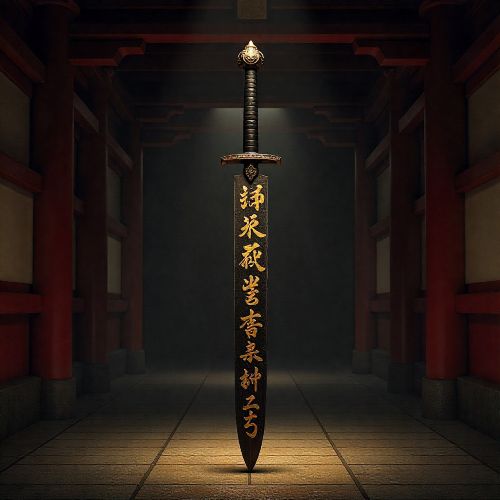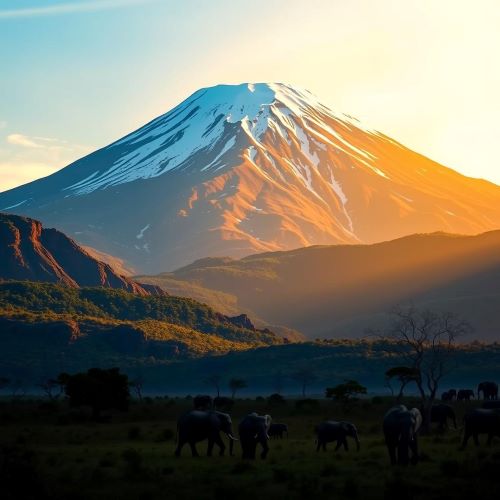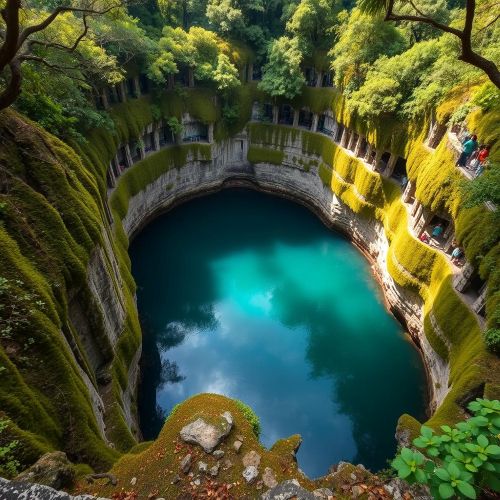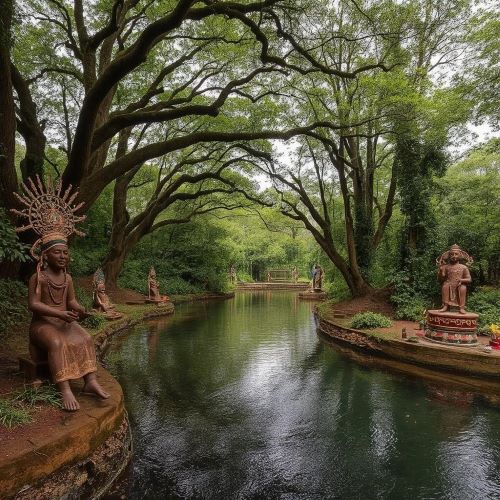Acheron River : Gateway to the Underworld
At a glance
| Description | |
|---|---|
| Mythology | Greek Mythology |
| Country | Greece |
| Closest airport | Ioannina National Airport (IOA) |
| Type | Natural |
| Accessibility | 10/10 |
Introduction
The Acheron River flows through the Epirus region of northwestern Greece, carving its way across Ioannina, Thesprotia, and Preveza before finally meeting the Ionian Sea at Ammoudia. Surrounded by dramatic gorges, lush vegetation, and crystal-clear waters, the river is both a natural wonder and a cultural landmark. Visitors encounter an environment that blends serenity with excitement, where peaceful pools sit alongside rafting rapids, and tranquil walking trails give way to striking cliffs. Known not only for its beauty but also for its legendary associations, the Acheron River continues to draw travelers who wish to experience both its landscapes and its mythological aura.
Connection with Mythology
In Greek mythology, the Acheron River is one of the five rivers of the Underworld, often described as the “river of pain” or “river of woe.” Ancient writers like Homer and Pausanias depicted it as the passage through which souls crossed after death. The ferryman Charon, a central figure in these stories, would carry souls across its dark waters in exchange for a coin placed in their mouths during burial rituals. Those who had no payment were said to wander along its banks for a hundred years before they could enter the realm of Hades.
The Acheron is also mentioned in Homer’s Odyssey, where Circe directs Odysseus to its confluence with other rivers as the site where he could communicate with the dead. Roman poets such as Virgil incorporated the Acheron into the Aeneid, reinforcing its place as a border between the living and the dead. Later traditions even personified the river itself, describing Acheron as a divine being punished by Zeus for aiding the Titans. Plato, in Phaedo, offered a more philosophical take, portraying the river as one of the great subterranean currents that cleansed the souls of the departed. These layered accounts ensured that the Acheron River became deeply embedded in the imagination of both ancient and later societies, symbolizing transition, purification, and the mystery of death.
Ways to Get There
Most modern visitors explore the Acheron River near the village of Glyki, a hub for river trekking and nature activities. By car, the river is easily accessible from surrounding towns—about 35 minutes from Parga, under an hour from Preveza, and roughly 50 minutes from Igoumenitsa, which connects by ferry to Corfu and Italy. Parking near Glyki allows travelers to reach the springs on foot through a shaded forest path.
Public transport is available but less frequent. Buses run between Preveza, Ioannina, and nearby villages, though schedules may be limited, making car rentals a more flexible option. Taxis from tourist centers like Parga cost around €40–€50, and organized tours provide convenient packages that include guided treks, storytelling, and sometimes even meals at local tavernas. Visitors coming from Corfu can combine a ferry with car rental or taxi services, making the Acheron River an accessible day trip.
What to Look For
The Acheron River rewards visitors with both natural beauty and cultural landmarks. Its springs near Glyki are one of the main attractions, where icy water gushes from the mountains, creating a dramatic contrast with the summer heat. Walking directly into the river is a unique experience, as its cold waters flow through steep canyons lined with moss and towering limestone cliffs. Adventurers can try river trekking, rafting, kayaking, or even zip-lining across its turquoise stretches, while others may choose gentler activities such as horseback riding along the riverbanks.
The surrounding ecosystem, protected under the Natura 2000 network, is home to otters, amphibians, and a wide variety of birds of prey, including eagles and vultures that nest in the cliffs. For those interested in history, the nearby Necromanteion of Ephyra—the ancient Oracle of the Dead—provides insight into how the Greeks sought to communicate with departed souls. Remnants of the Souli watermills and Kiafa’s Castle also dot the landscape, offering glimpses into the turbulent history of Epirus. Archaeological remains near the Acherusian Lake connect directly to the myths of Hades, reinforcing the area’s spiritual associations. After exploring, travelers can enjoy local delicacies in riverside tavernas or relax on nearby beaches such as those in Parga and Preveza.
Importance in cultural history
The Acheron River has played a pivotal role in shaping beliefs about life and death. For the ancient Greeks, it represented the threshold between worlds, a place of both dread and reverence. Its association with Charon and the journey of the soul meant it featured prominently in funeral practices and philosophical discourse. Homer portrayed it as a route to the Underworld, while Virgil called it the central river of Tartarus. Plato’s description of its purifying flow added a moral dimension, suggesting that the Acheron was not only about suffering but also about spiritual renewal.
Over time, its reputation carried into later cultures. In Dante’s Inferno, the Acheron marks the first boundary of Hell, emphasizing its role as a spiritual frontier. Shakespeare alluded to it in Macbeth to invoke the horrors of damnation, while Christopher Marlowe used it in Doctor Faustus. Even Sigmund Freud borrowed a Virgilian reference to the Acheron in The Interpretation of Dreams, symbolizing the descent into the subconscious. Beyond literature, the river’s Necromanteion served as a real religious site where pilgrims underwent rituals to speak with the dead, blending myth with tangible cultural practice.
Today, the Acheron River continues to inspire tourism and scholarship, linking the ancient world with modern curiosity. It is recognized not only as a site of ecological beauty but also as a cultural landscape that preserves the imagination of Greece’s mythological heritage.
Best time to travel
The Acheron River can be visited year-round, but the experience varies with the seasons. Summer, particularly July through September, is the most popular time, when the river’s level drops and water trekking becomes easier. The cold currents are refreshing in the heat, and activities such as rafting or swimming are more comfortable. Spring also offers a spectacular experience, with the surrounding valleys bursting into bloom and hiking trails providing dramatic views of the river from above.
For those wishing to avoid crowds, mornings and late afternoons are ideal, as midday tends to be busier with tour groups. Winter visits are less common since heavy rains and snowmelt swell the river, making some treks unsafe, though the scenery remains striking for those who enjoy solitude and dramatic landscapes.
Source
Greek Destinations. (n.d.). Acheron River. Retrieved September 13, 2025, from https://greekdestinations.gr/rivers/acheron-river/
Makridis Travel. (n.d.). Acheron River. Retrieved September 13, 2025, from https://www.makridis-travel.gr/acheron/
ExploreRides. (n.d.). Exploring the River Acheron the Gateway to the Underworld. Retrieved September 13, 2025, from https://www.explorerides.com/exploring-the-river-acheron-the-gateway-to-the-underworld/
Acheron – Wikipedia. (2002, August 28). Retrieved from https://en.wikipedia.org/wiki/Acheron
The Acheron River: Walking to the Gates of Hell – Travel Post Monthly. (2021, January 31). Retrieved from https://www.travelpostmonthly.com/2021/01/the-acheron-river-walking-to-the-gates-of-hell/
Acheron | Mythology, Underworld, Hades, & Map | Britannica. (2025, August 26). Retrieved from https://www.britannica.com/place/Acheron
Acheron River in Parga, Greece – Greeka. (2008, July 19). Retrieved from https://www.greeka.com/epirus/parga/sightseeing/parga-acheron-river/
Greece’s river to the ‘underworld’ now lures adventure travelers. (2025, May 9). Retrieved from https://www.nationalgeographic.com/travel/article/greece-river-to-underworld-now-lures-adventure-travelers
Frequently Asked Questions
Lorem ipsum dolor sit amet, consectetur adipiscing?
Lorem ipsum dolor sit amet, consectetur adipiscing elit. Praesent convallis vestibulum justo, ac tincidunt nunc vehicula quis. Nullam id dolor quis orci malesuada feugiat. Curabitur aliquet libero at urna ullamcorper, ac ultricies nulla dapibus.
Lorem ipsum dolor sit amet, consectetur adipiscing?
Lorem ipsum dolor sit amet, consectetur adipiscing elit. Praesent convallis vestibulum justo, ac tincidunt nunc vehicula quis. Nullam id dolor quis orci malesuada feugiat. Curabitur aliquet libero at urna ullamcorper, ac ultricies nulla dapibus.
Lorem ipsum dolor sit amet, consectetur adipiscing?
Lorem ipsum dolor sit amet, consectetur adipiscing elit. Praesent convallis vestibulum justo, ac tincidunt nunc vehicula quis. Nullam id dolor quis orci malesuada feugiat. Curabitur aliquet libero at urna ullamcorper, ac ultricies nulla dapibus.
Lorem ipsum dolor sit amet, consectetur adipiscing?
Lorem ipsum dolor sit amet, consectetur adipiscing elit. Praesent convallis vestibulum justo, ac tincidunt nunc vehicula quis. Nullam id dolor quis orci malesuada feugiat. Curabitur aliquet libero at urna ullamcorper, ac ultricies nulla dapibus.
Lorem ipsum dolor sit amet, consectetur adipiscing?
Lorem ipsum dolor sit amet, consectetur adipiscing elit. Praesent convallis vestibulum justo, ac tincidunt nunc vehicula quis. Nullam id dolor quis orci malesuada feugiat. Curabitur aliquet libero at urna ullamcorper, ac ultricies nulla dapibus.









